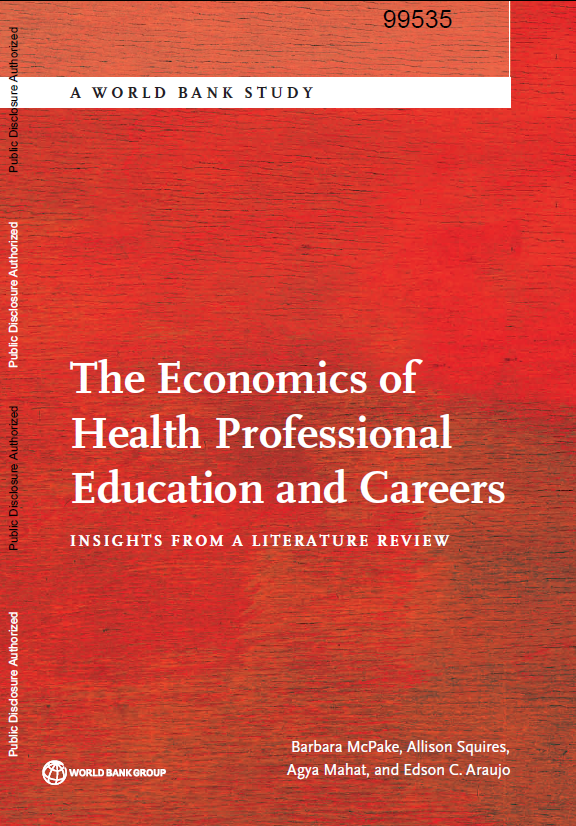The Economics of Health Professional Education and Careers : insights from a Literature Review
Date
2015Author
McPake, Barbara
Squires, Allison
Mahat, Agya
Araujo, Edson C.
Metadata
Show full item recordAbstract
The formation of health professionals is critical for the health system to function and to achieve its universal health coverage (UHC) goals, and this is well recognized by the majority of governments that plan to ensure enough training places and aim to regulate in order to ensure quality. But the importance of market forces is often overlooked, resulting in interventions and regulations that often fail to achieve their intended effects. The purpose of this study is to inform the design of health professionals’ education policies to better manage health labor market forces toward UHC. It documents what is known about the influence of market forces on the health professional formation process. It aims to cover all types of health professional (although the constraints of the literature resulted in a primary focus on physicians and nurses). While it aims at a long-term perspective, available evidence covers mainly the last two decades. The report sought to answer the following questions: What have been the large global and regional trends in the development of health professions? How have these trends affected the career decisions of current and potential health professionals? What is the evidence base on the value and effectiveness of health professional education of different types? How has the market for health professional education evolved, and with what interrelationships with the health labor and health care markets? The contexts of the market for health professional training have been subject to important changes in recent decades, in particular the growing extent of employment of mid-level cadres of health professionals; changes in technology and the associated growth of high-skilled occupations; the increasing interconnectedness of national health systems through globalization, with its implications for international health professional mobility; and the greater complexity of the public–private mix in employment options. The first has involved the creation of new training opportunities, the value of which is suggested by a fairly convincing body of evidence that such new cadres are contributing significantly to the provision of effective health care for underserved populations or of services in short supply. The expansion of the role of mid-level cadres has been accompanied by a growing role also for “low-level” providers, something particularly pronounced in low- and middle-income countries (LMICs) in the form of community health workers but also present in high-income countries in roles such as care assistants. Technological changes in the health care sector have resulted in substantial increases in returns to high-skilled occupations, boosting the demand for specialization training and resulting in a skill-biased composition of the health workforce. Globalization has increased international migration of health professionals, which reached unprecedented levels in the early years of the twenty-first
century. There has also been a growing trend toward considering the needs of the global health market when setting training curricula, which has made some curricula less appropriate for preparing staff for their own countries or regions. This demand for training in internationally tradable health professional skills also partially explains the growth of a private for-profit health professional training industry (particularly marked in some LMICs). The market for health professional training and its outcomes is skewed by market failures inherent to health care, transmitted through a series of derived markets. Most importantly, the wage rate fails to reflect the value of health professional work as judged by its social returns (contribution to public health) because of the following: Information problems in the health care market create a gap between willingness to pay and informed willingness to pay (for the most effective interventions). The distribution of ability to pay causes those with high public health need to have weak demand. Government efforts to replace individual willingness to pay with public finance are affected by a combination of weak fiscal capacity, weak governance, and/or weak political will to direct public investment to the poorest and least healthy in the most cost-effective way.

